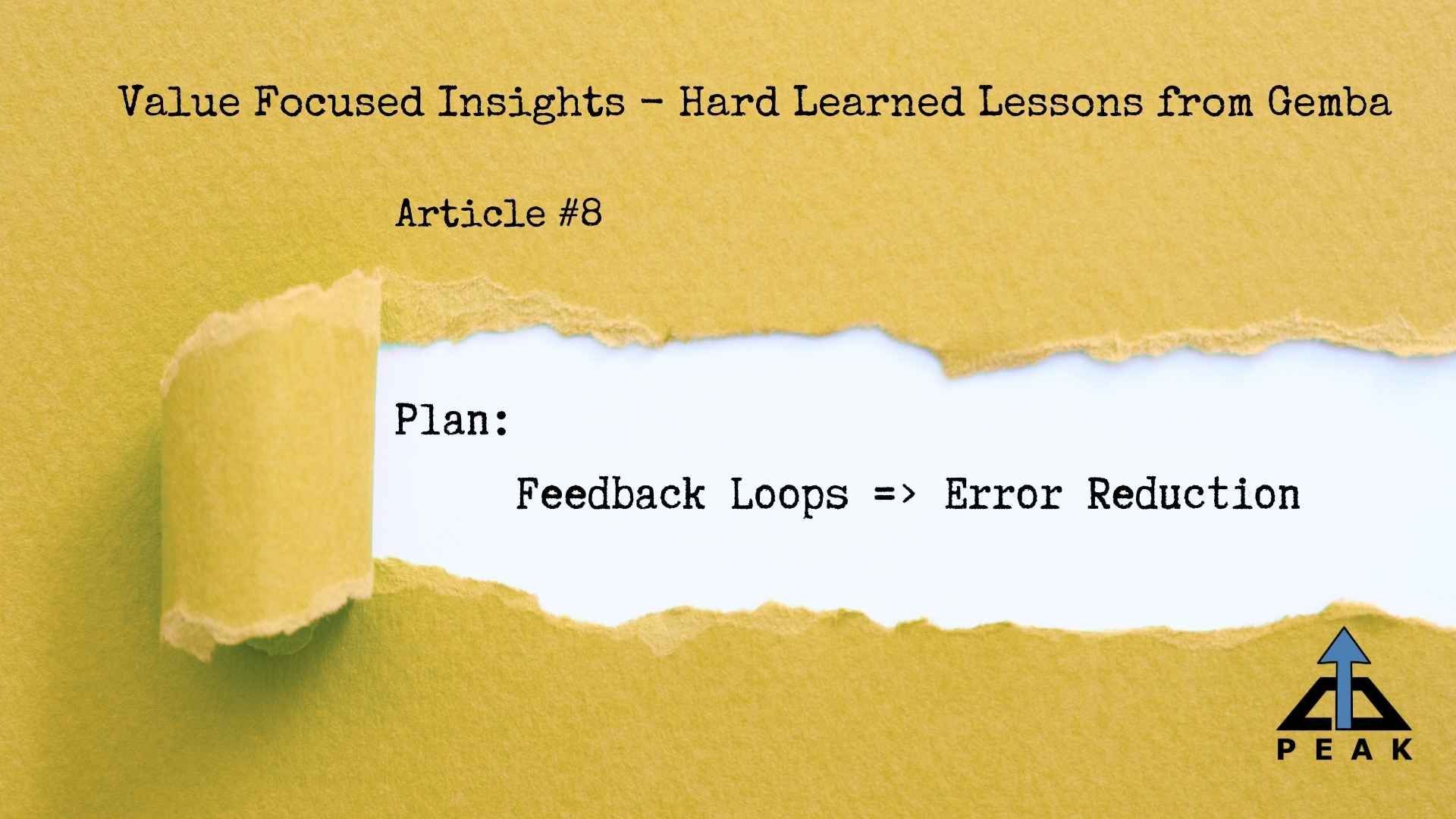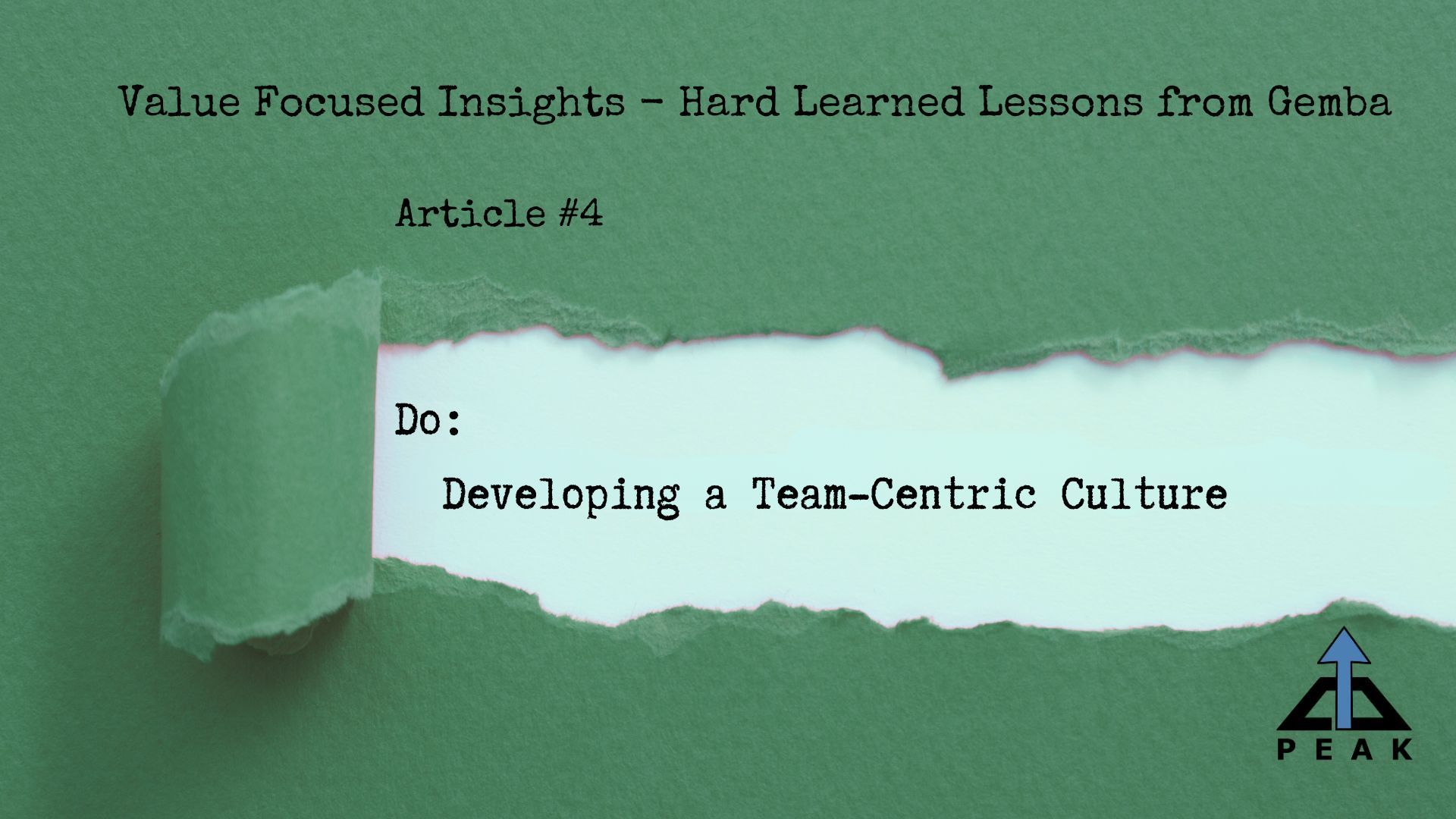Embracing Slower Times - Part 2: How to Run at Lower Demand
Tim Upchurch
In part 2 of our series of articles on how to build resilience for long term success during periods of lower demand, we address how to staff and run at lower capacity while maintaining your edge. Several simple rules are provided that contain best practices or lessons learned during our careers. We also discuss how to effectively deploy excess personnel for driving a balanced approach to continuous improvement initiatives.
It is imperative that any costs more than what is required to meet demand are considered investments for the future – payback should be quick and provide an excellent return. This is NOT the time for any functional team to lounge. This is the time for the hard work of improvement.

It's not uncommon to face periods of low demand. These challenging times can be a cause for concern, but they also present an opportunity for organizations to optimize their operations and focus on continuous improvement. One aspect that organizations should consider during low demand periods is how to effectively manage resources such as personnel, machines, production lines, cells, or service teams while maintaining productivity and driving long-term improvement.
In our last article, we discussed the idea of an alternative perspective – one where VALUE is a priority over cost. You want to improve your ability to convert cost to VALUE.
- When demand is high – focus more on running effectively and seek to deliver value consistently.
- When demand is low – focus on harvesting value.
Peak Productivity recommends that you use times of lower demand to remove waste and build resilience in your organization. The key is to come out of slow periods better prepared to outperform your competition in every future business environment. This article will discuss several options and strategies. Your individual business condition will dictate which is best.
Regardless of your strategy, before you start making wholesale changes, understand the long-term impact and consequences of your action plan. I recommend someone very experienced play the role of devil’s advocate and pick apart your hypotheses. Some organizations will use urgency as an excuse to quickly develop and implement a plan. There is nothing wrong with taking a pause to develop a recovery-plan on how to “un-implement” if changes go south. “Never test the depth of water with both feet” is the old proverb that comes to mind. An alternative would be to run several ideas as experiments and then let the results dictate directions. Be humble and expect to make many course corrections as you adapt to the changing market expectations. First and foremost:
Rule 1: You must protect your customer.
- If for any reason you cannot meet the lower production/service requirements, you must correct this immediately.
- Never cut any process input so low that you can’t recover.
During periods of low demand, it's crucial to align production capacity with the reduced market requirements. Operating all machines or production lines at full capacity when demand is low results in inefficiencies, increased costs, quality issues, overproduction and will negatively affect morale. Make sure your actions exhibit respect for your team. People like to be challenged appropriately. Don’t add stress to inefficiency - nobody likes having to try and look busy when their boss comes around.
By consolidating production resources, organizations can achieve better utilization of available assets and optimize their operations. Here's several ideas and rules that an organization can use to effectively run with fewer machines or production lines during low demand periods:
Assess Demand and Right-Size Inventory: Thoroughly analyze the market demand and determine the appropriate level of production capacity needed to meet customer requirements. This assessment should consider factors such as order volume, product mix, and lead times. Identify the machines or production lines that can be temporarily shut down or operated at reduced capacity without compromising overall productivity. Prioritize shutting down lines based on historical performance. Before taking down any equipment, it's important to right-size the inventory in the pipeline. This means ensuring that you have adequate stock levels to fulfill current demand without excessive carrying costs.
Rule 2: Determine how many resources are needed to achieve the new demand level at standard work or productivity levels.
- Staff the production/service areas to achieve demand at standard.
- Ensure inventory levels are sufficient to prevent flow problems. Do NOT overproduce.
- Determine if there are quality or productivity differences between lines.
- The better performing lines should be used for production, the poorer performing lines should be improved.
- Look at gaps in your cross-training matrix for opportunities.
Run Limited Lines at the Standard Rate: Running the lines at the standard rate helps ensure consistency in production output and quality. By adhering to established operational standards, organizations can avoid unnecessary variability and maintain a level of stability in their processes. If production spikes for a short period or if you fall behind pace and you're unable to recover with overtime, you should temporarily turn on idled lines to catch up. Once you've caught up, the extra lines should be immediately shut down. This approach helps avoid building excess inventory, which adds unnecessary cost.
Rule 3: Run the remaining staffed lines at the standard rate.
- Never attempt to exactly match your staffing capacity to meet demand. If you recall from our last article, we provided ample reasoning why you would fail to achieve production/service requirements. Add the right level of excess labor to support, but NO more.
- Do not make the mistake of running everything, but slower. All you will do is increase costs and create lazy behavior.
- Run the lines with only the required level of personnel.
- If you fall behind, turn on idled lines only to catch up, then immediately turn them back off.
- Improvement work will be scheduled on idle lines – all disruptions should be minimized.
Focus on Preventive Maintenance: With fewer machines or production lines in operation, organizations can allocate a portion of excess personnel to focus on preventive maintenance activities. This approach ensures that in the long-term available assets can remain in optimal condition. Preventive maintenance and reliability activities help reduce the risk of future unplanned downtime and equipment failures, which can be costly and disrupt operations in normal markets. By proactively addressing maintenance needs or performing tear downs and rebuilds, you can improve long term uptime and performance. Total Productive Maintenance (TPM) and equipment reliability strategies will be addressed in an upcoming article in this series.
If major overhauls or maintenance activities are planned during low demand periods, it's crucial to connect with customers and be transparent about your intentions. Communicating any prolonged downtime to your customers helps manage their expectations. Based on their visibility of their own demand, it may spark discussions about level loading or other strategies to partner together.
Run Experiments with Technical Personnel: If you have repeat quality issues such as yield losses or rework, it is vital they be addressed during slow periods. Experienced operators working together with engineering and quality personnel can support running experiments and their insights can provide vital help in getting to the root cause of quality problems. They are the experts at running the process. They can help determine how varying inputs affect quality, or support teams seeking deeper understanding of the science behind your processes. Their skills are helpful in testing new technologies, implementing process improvements, or conducting trials for product enhancements. Teams of operators can work with operations personnel for innovative solutions on efficiency gains or product advancements. Running experiments during low demand periods ensures that these initiatives receive the necessary attention and resources and can lead to potential breakthrough improvements. Engaging the workers will provide long term impact – they are better informed of their process and what is vital in generating value.
Support Projects and Other Initiatives: Excess personnel can also play a vital role in supporting continuous improvement initiatives. Organizations should prioritize lean methodologies and encourage a culture of continuous learning and improvement. Assigning personnel to work directly on the production lines during slower periods allows them to observe processes closely, identify inefficiencies, and propose improvement ideas. These individuals can also assist in implementing and monitoring the progress of improvement projects. Examples that could provide return on investment are:
- Safety Upgrades and Programs
- Quality Initiatives such as Error Proofing and Defect Reduction
- Lean Initiatives such as 5S, Standard Work Development, SMED
- Six Sigma/Lean Sigma Project Support
By actively involving employees in continuous improvement efforts, organizations can foster a sense of ownership and engagement, leading to sustained operational excellence. Ideas implemented by operators require less enforcement than those generated by other groups.
Rule 4: Divide excess production/service personnel as needed to support improvement initiatives.
- If you decide to rotate personnel from production to improvement work - plan out who is going to be where and when. Make sure any vacations or other absenteeism issues won’t impact Rule 1.
- Establish challenging improvement targets for all improvement initiatives. There must be long term payback for your investment – communicate the business needs and consequences for failure.
- Teach your operators to look for deviations from standard work and how to improve difficult activities – this is where the errors will probably be made in production.
Culture Needed to Support: This approach is going to ask a lot of your team. Does your current culture support all levels and functions working together to take on challenges, accepting responsibility, and actively engaging in making improvements? If you have made the decision to embark on this path, it is essential to ensure that your team and leadership can be successful. A key aspect of this will be shifting the focus of management:
- Reactive to Proactive
- Reporting Results to Actively Supporting
- Results Focused to Process Focused
- Victim Mentality to Accountability
The good news is that you can start changing your culture in any market environment. However, there are important questions you will need to address:
- WHAT needs to change?
- Maybe even WHO needs to change?
- What HELP will be needed to make the changes?
- HOW to create a successful plan?
As a leader, it is essential to start with yourself. If your own behaviors don't align with the desired changes, there is a slim chance that change will occur. You need to exhibit the changes you want to see. Take several weeks to work on fixing your own leader standard work before asking anyone else to change. Get a coach or engage someone to hold you accountable. As you change the questions you ask, the organization will respond and adjust in the right direction. Don't be the boss that says, "do as I say, not as I do". Lead by example.
For example, if you want to become less reactive and more proactive, examine how you approach discussions. Are you only asking questions about results? Are your systems designed to focus on outputs or inputs? Evaluate the amount of time you spend in meetings or interactions discussing things that already happened. As the leader, you set the tone for what is prioritized and emphasized within the organization.
By addressing the culture needed to support your desired changes, and starting with yourself as a role model, you lay the foundation for a more engaged and proactive workforce. Remember, culture change takes time and consistent effort, but the results can be transformative. Embrace the opportunity to shift your culture and create an environment where all levels and functions work together towards continuous improvement and success.
Take your organization to the next level of resilience and success. Embrace the strategies of running with fewer machines or production lines, optimizing resources, and fostering a culture of continuous improvement. By doing so, you lay the foundation for enhanced efficiency, innovation, and employee engagement. Change your perspective from a defensive posture of cost-cutting to proactively attacking waste and converting cost into value. Thrive in the face of challenges and print money when demand returns.
At Peak Productivity, we believe in the power of people. We know that under the right conditions, they can meet any challenge and thrive. If you're ready to elevate your organization's performance, reach out to us today. Let's have a conversation about how we can help you achieve your goals and take your organization to new heights. Together, we can build a stronger, more resilient future.
Peaks and Valleys.....












